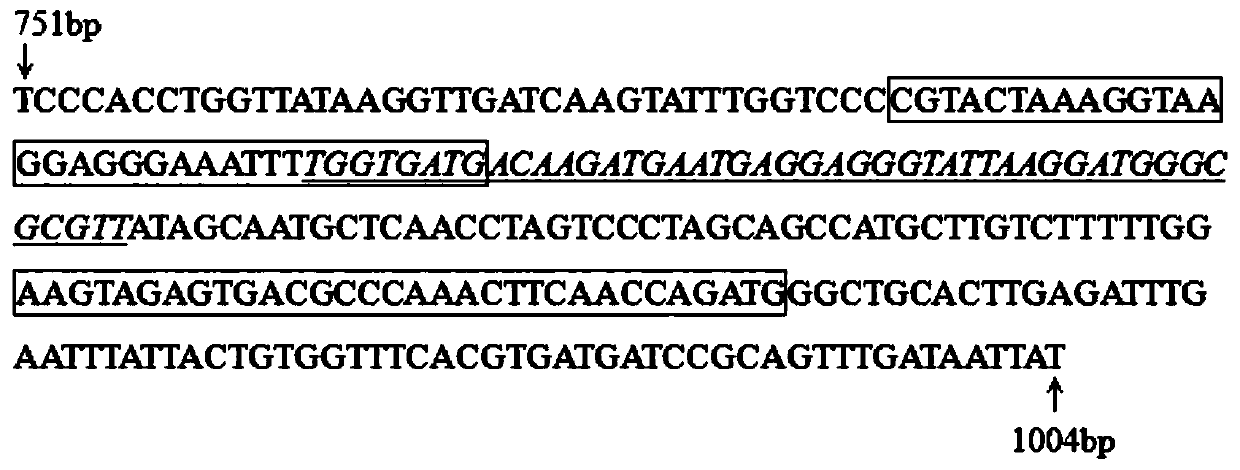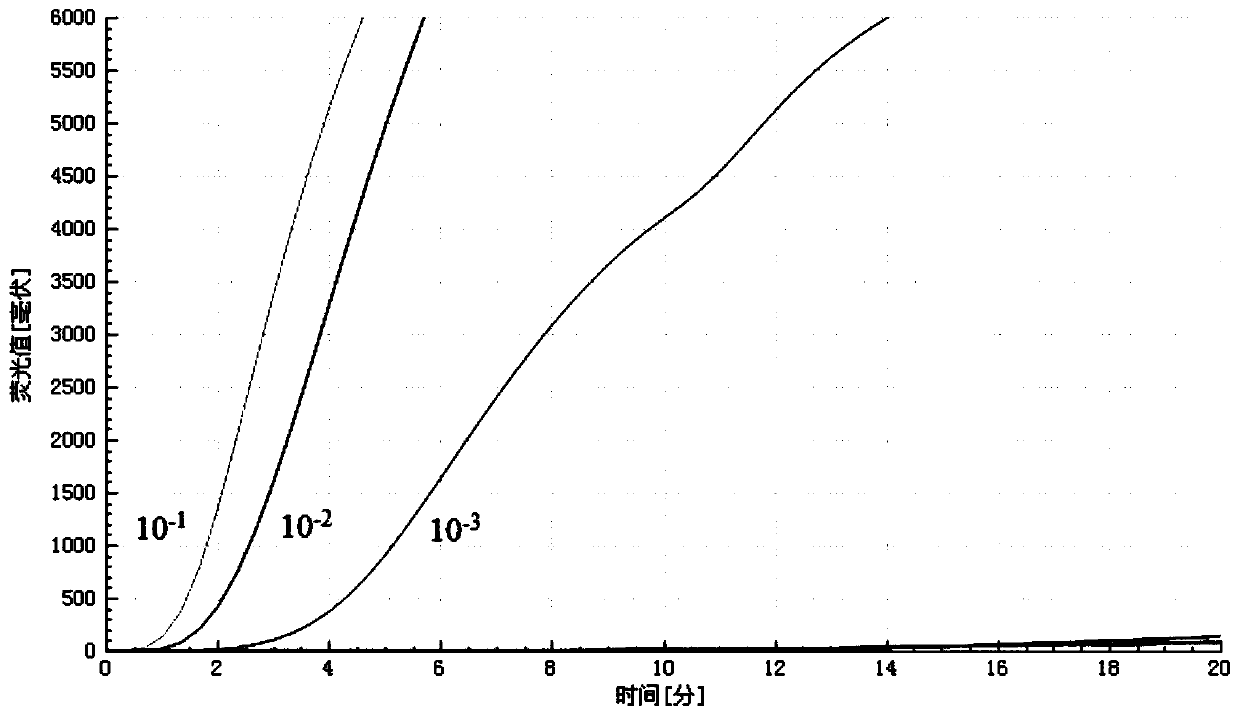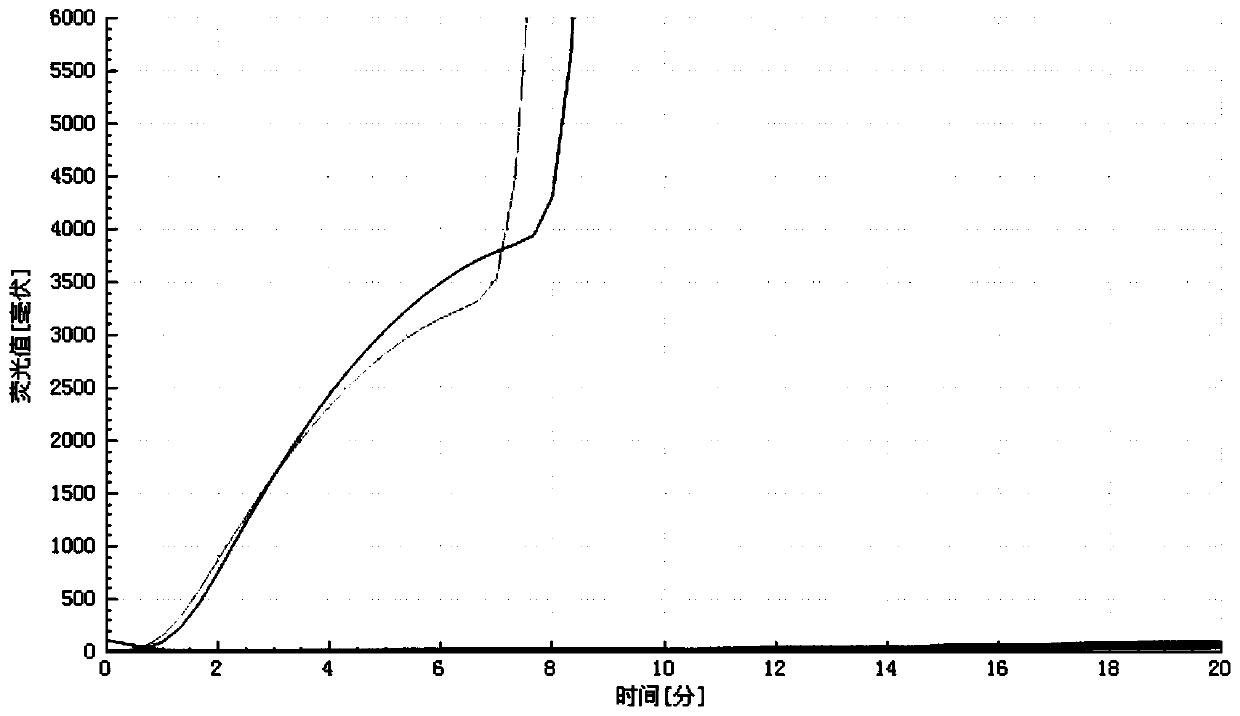RT-RAA detection method for avian infectious bronchitis virus
A technology for RT-RAA and bronchitis, applied in the field of temperature amplification detection, can solve problems such as limitations, inability to reflect the mechanism of genome variation, and inability to detect genotypes
- Summary
- Abstract
- Description
- Claims
- Application Information
AI Technical Summary
Problems solved by technology
Method used
Image
Examples
Embodiment 1
[0027] Example 1: Primer and probe design and screening for detection of avian infectious bronchitis virus
[0028] Through the analysis of the S1 gene, the applicant found that because the S1 gene is the typing gene of IBV, it has mutated under the immune pressure of the vaccine and the immune pressure of the avian infectious bronchitis virus vaccine in recent years, so the recent In recent years, avian infectious bronchitis virus has been comprehensively tested. By analyzing the IBV genomes of avian infectious bronchitis virus epidemic strains in recent years, the conserved N gene was finally selected as the target gene, and primers and probes that can detect the currently reported genotypes were designed and screened.
[0029] 306 published N gene sequences containing 9 genotypes of IBV were found by NCBI, and the conserved regions were analyzed according to gene alignment. After homology analysis, the bases located at 751bp-1004bp (reference sequence GenBank accession numb...
Embodiment 2
[0061] Embodiment 2: detection sensitivity and specificity of primer probe
[0062] Detection sensitivity
[0063] Six groups of avian infectious bronchitis virus RNA templates with different concentrations were set up for nucleic acid amplification under the optimal conditions of RT-RAA.
[0064] Extract Avian Infectious Bronchitis Virus RNA according to the instructions of the RNA extraction kit, measure the original concentration of the extracted RNA template, dilute to 1ng / μL according to the ratio, and then dilute to 10 by a 10-fold gradient. -1 ng / μL, 10 -2 ng / μL, 10 -3 ng / μL, 10 -4 ng / μL, 10 -5 ng / μL, 10 -6 ng / μL, take 2 μL respectively as the reaction template, and carry out RT-RAA nucleic acid amplification according to the aforementioned sample loading method.
[0065] The result shows that the primer and probe combination designed by the present invention can guarantee the sensitivity during detection, and the detection sensitivity is RNA final concentration 1...
Embodiment 3
[0068] Embodiment 3: detection application to actual sample
[0069] 1. Sample collection:
[0070] A total of 30 throat swab samples were collected from poultry in a live poultry wholesale market. PBS solution (pH7.0-7.4, 0.01mol / L) was used as the preservation solution (containing penicillin 2000IU / mL, streptomycin 2000IU / mL, nystatin 1000IU / mL, BSA5mg / mL). After collection, the samples were sealed in an incubator with ice and sent to the laboratory for processing or stored at -70°C within 24 hours.
[0071] 2. Sample Preparation
[0072] Place the cotton swab in a centrifuge tube filled with 1 mL of sample preservation solution, vortex and mix well, centrifuge at 10,000 r / min at 4°C for 5 min, and take the supernatant for nucleic acid extraction.
[0073] 3. Nucleic acid extraction
[0074] According to the instructions of the RNA extraction kit, 30 clinical samples to be tested, positive control and negative control RNA were extracted. The extracted RNA must be amplif...
PUM
 Login to View More
Login to View More Abstract
Description
Claims
Application Information
 Login to View More
Login to View More - R&D
- Intellectual Property
- Life Sciences
- Materials
- Tech Scout
- Unparalleled Data Quality
- Higher Quality Content
- 60% Fewer Hallucinations
Browse by: Latest US Patents, China's latest patents, Technical Efficacy Thesaurus, Application Domain, Technology Topic, Popular Technical Reports.
© 2025 PatSnap. All rights reserved.Legal|Privacy policy|Modern Slavery Act Transparency Statement|Sitemap|About US| Contact US: help@patsnap.com



